Well, it’s been nearly 5 years in the making, and it finally happened! This afternoon, I ran a formal operating session.
Before I delve into the session itself, I’m going to tell you how I’ve decided to operate. It’s all time table and train order operation, and if you’re curious about that, this is a great tutorial. In real TT&TO, station agents at the train order stations would talk to the dispatcher and hand train orders to the crews on hoops. I don’t have agent/operators, so there’s a cordless phone at each TO station. (Theoretically) the crews will call in to the dispatcher to OS (on sheet) their train, meaning they’ll tell the DS what train they are and what time they’re by the station. They also read back any train orders they got to make sure they have them correctly.
The phones themselves are Vtech something-or-others that have a push to talk functionality. It’s like radios, except they go specifically to the handset you specify instead of all of them.Super easy!
Car routing is handled entirely through JMRI, and it’s pleasantly automatic. No switch lists written by hand, no car cards to keep track of, no methodically placed tabs on cars. You get a printed switch list with all your work and are set free.
So, for today’s session I had 5 operators and a dispatcher. I hand-bombed the notes from the dispatcher to the crews and roamed around to troubleshoot. Most notably was the huge cleanup I did!
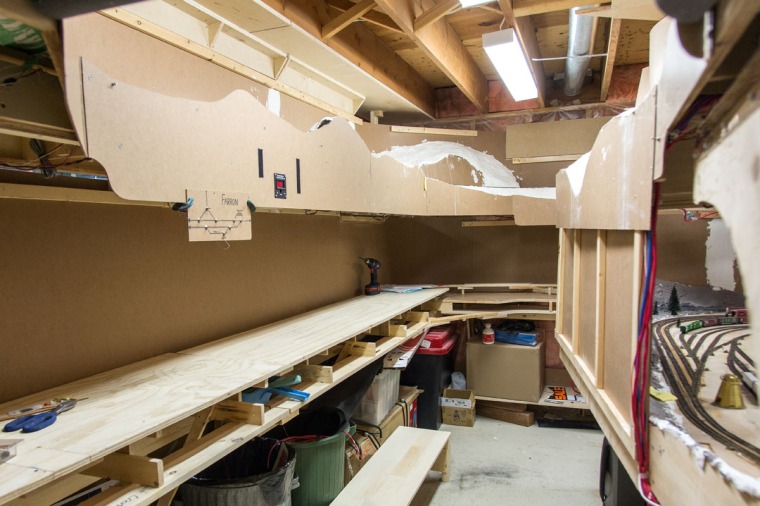
Before everyone arrived, I got their paperwork ready. I got a bunch of half-size clipboards, about 6×9″. They all get a copy of the timetable, plus switch lists, a skewer, and a cheat sheet. In this shot you can see how I’m using Nelson tracks 1-5 for staging and 6-9, yet unlaid, as the yard.
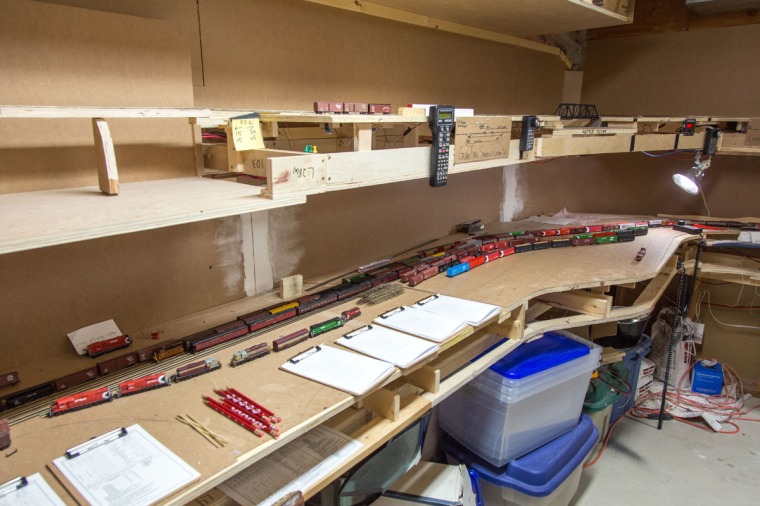
The trains need re-blocking before they depart, but I left that to the crews. Here we see Rob and Doug, trains 81 and 87 respectively, beginning to block their trains. You can see the phone for Nelson velcro’d to the upper deck. (Is velcro a verb now?)
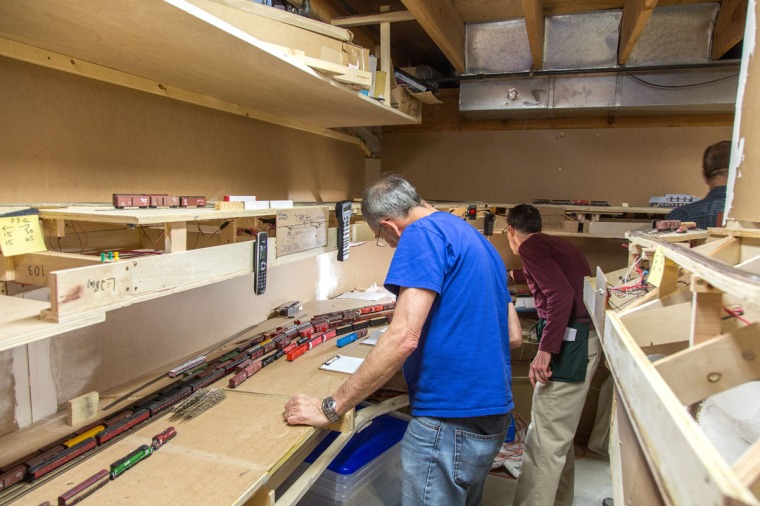
Once everyone got moving, 87 ended up meeting X5904E, the Trail Hotshot, at Castlegar.
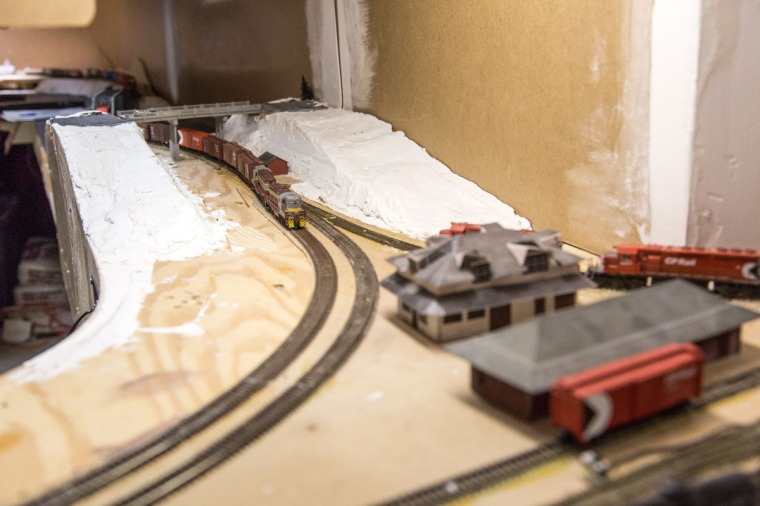
Meanwhile, X4104E, the Boundary sub wayfreight pops into Grand Forks on the upper deck. Lowlight of the day: It was originally X8610E, but 8610 burned out its decoder within half an hour and 8554 also failed. I am so done with Bachmann H16-44s at this point.
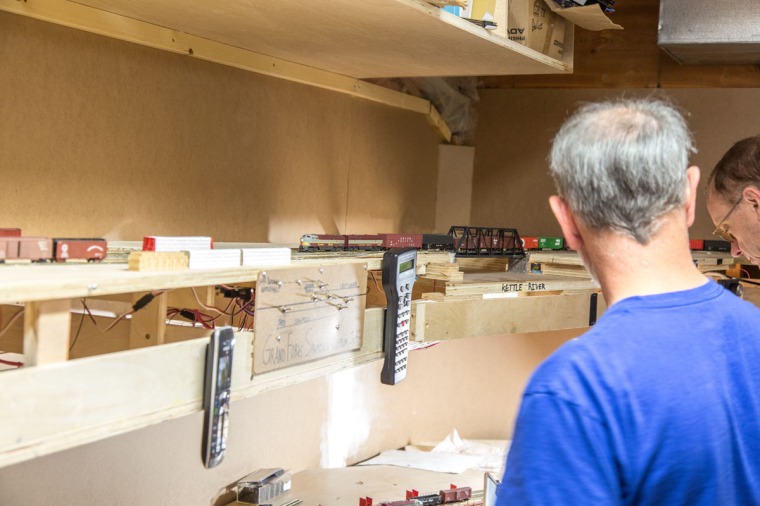
A heavy train, the wayfreight looked odd with 2 units, but those Life-Like C-liners more than pull their weight!
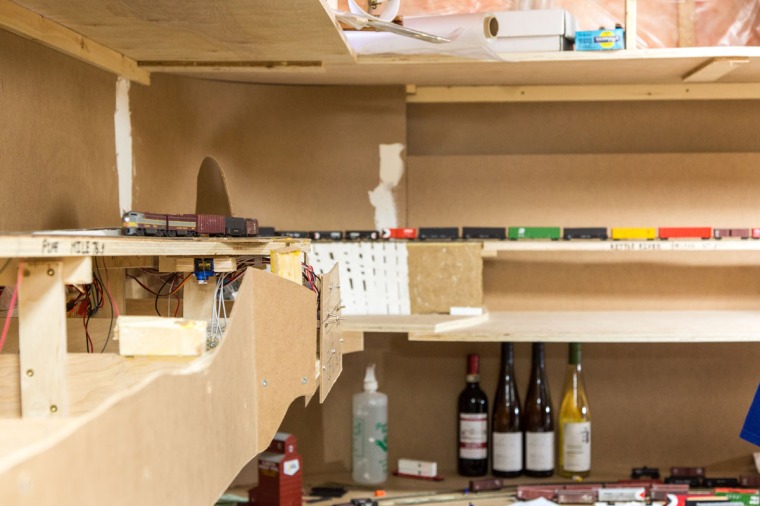
During this, 11, the Kootenay Express has made its way up from Nelson. Here we see it and its operator chugging up through Shields.
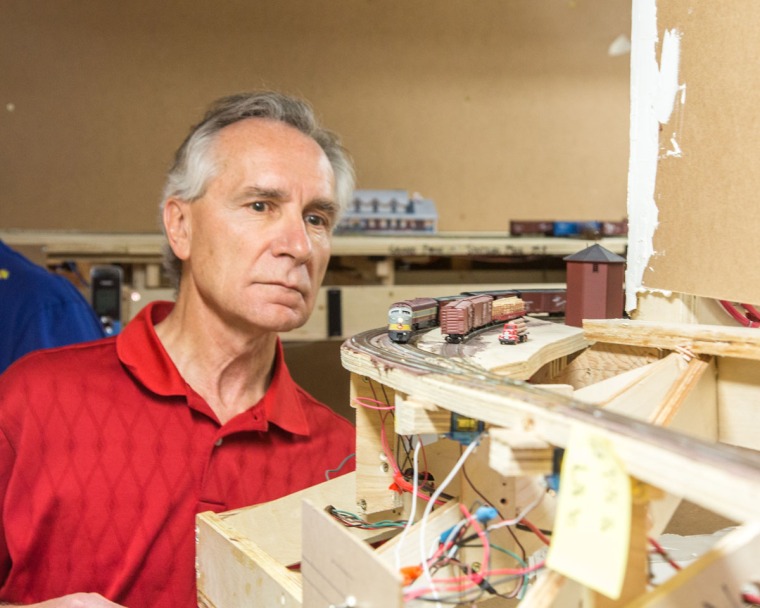
…and over Porcupine Creek.
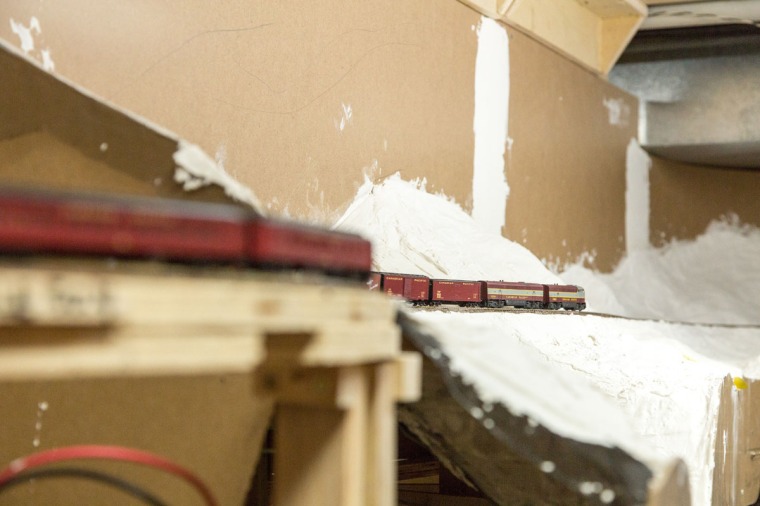
In pretty short order, 11 loops around the reverse loop in Midway and becomes train 12, the Kettle Valley Express. In the meantime, the GN Grand Forks turn has emerged from Kettle Falls, Washington, started its work around Grand Forks, and as per timetable, tucked itself away in the runaround at the sawmill.
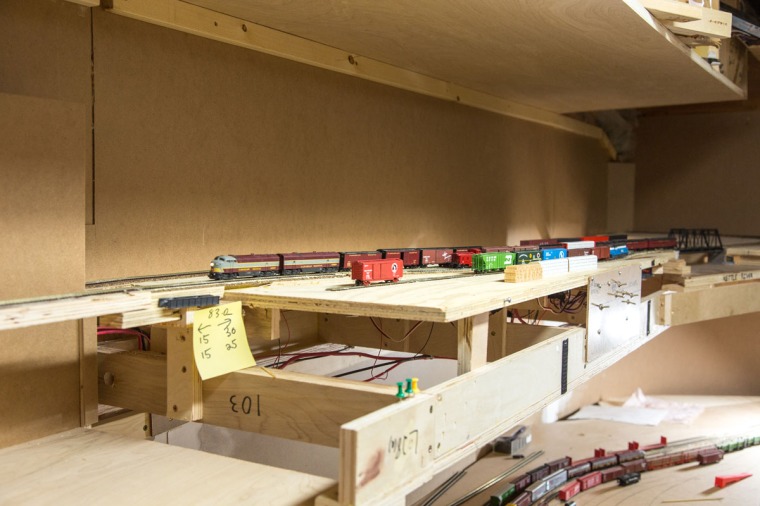
81 has bravely made its way up from Castlegar through this. Through a miscommunication between X4104E and the dispatcher (Note to self: Only train orders, no talking) they had a double saw-by meet at the shorter siding of Shields. I was too busy fixing that terror to take photos.
Here we see 81 and 12 heading toward a meet at Farron. I believe this is the ‘oh hey another train’ look.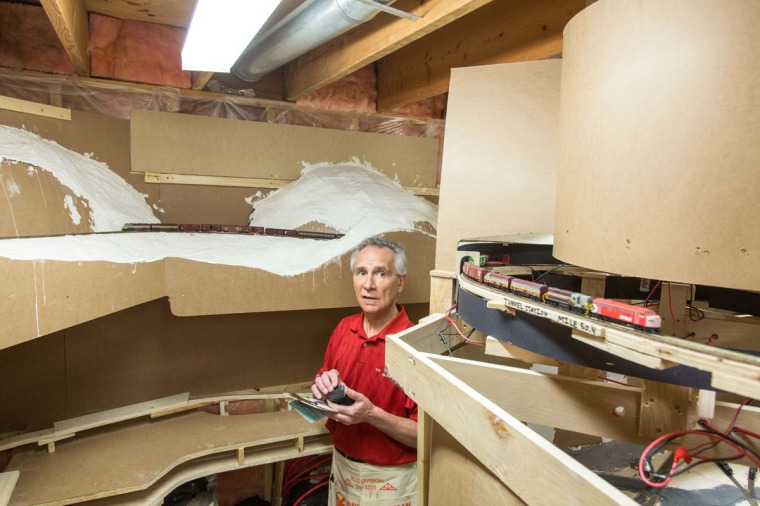
Unfortunately, the consist on 81 didn’t perform as well as I’d hoped and ended up stringlined. The casualty of the session, and fortunately the only one:
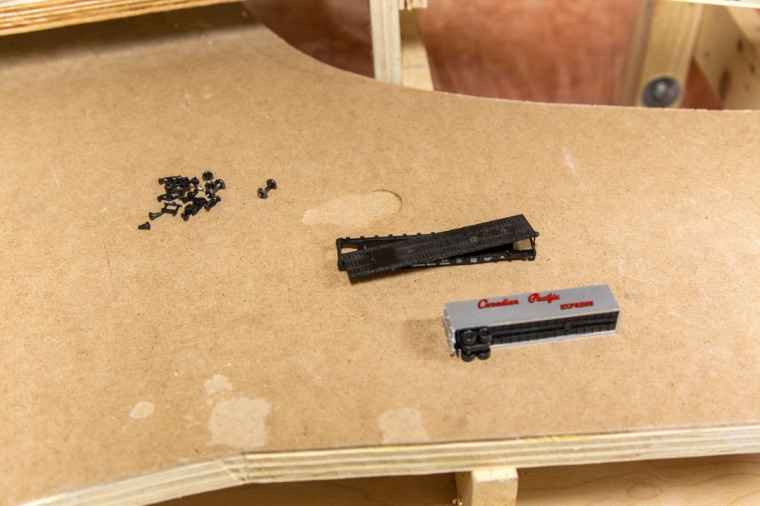
Here we go! 81 descends carefully down the west side of Farron summit.
Around now X4104E terminated as well as 12, and some extras came out. First was X8647E, a loaded ore train coming from the newly reactivated mines at Phoenix and heading to the smelter at Trail.
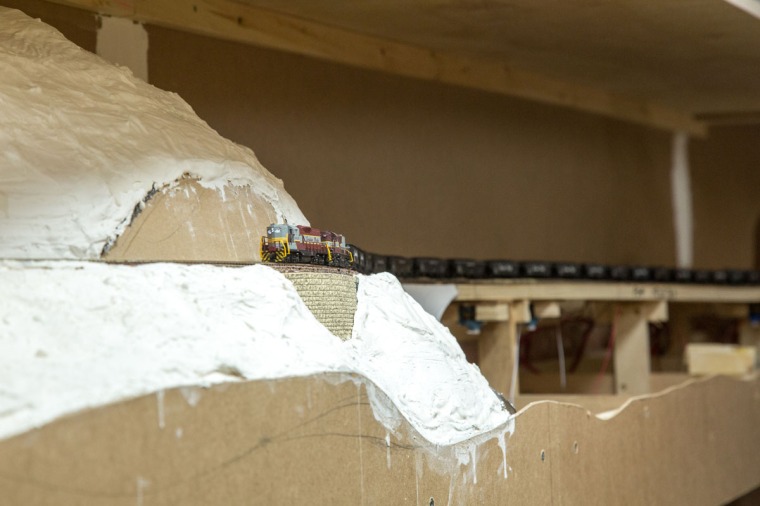
X8647E and X4070W, a through freight headed to Penticton and points beyond, meet at Shields – they’re both under 1220′ and fit in Shields.
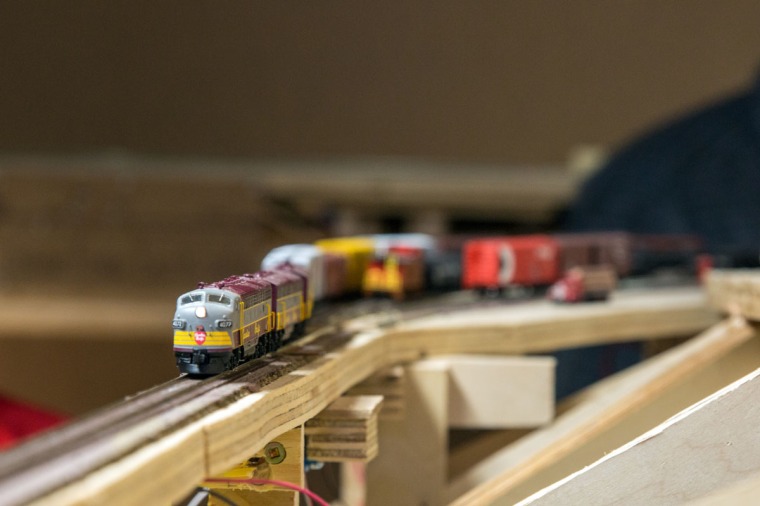
A few minutes later, 81 is working in Grand Forks. You can see the station that I printed out – I used a photo I took last year as a stand-in.
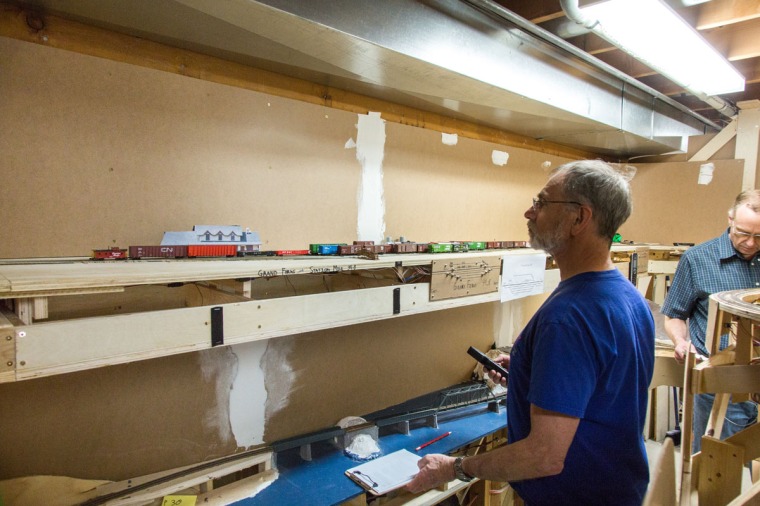
Meanwhile, 87 isn’t doing too well.
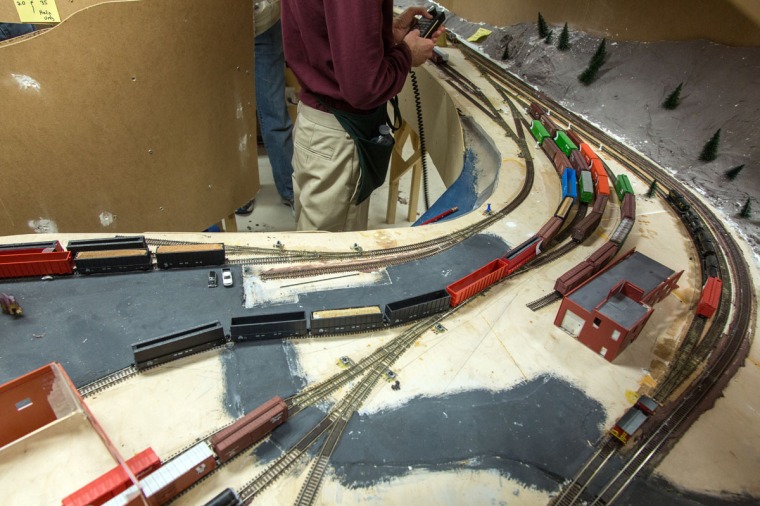
91, the westbound Trail hotshot, is picking up some acid tank cars from the small yard in Castlegar.
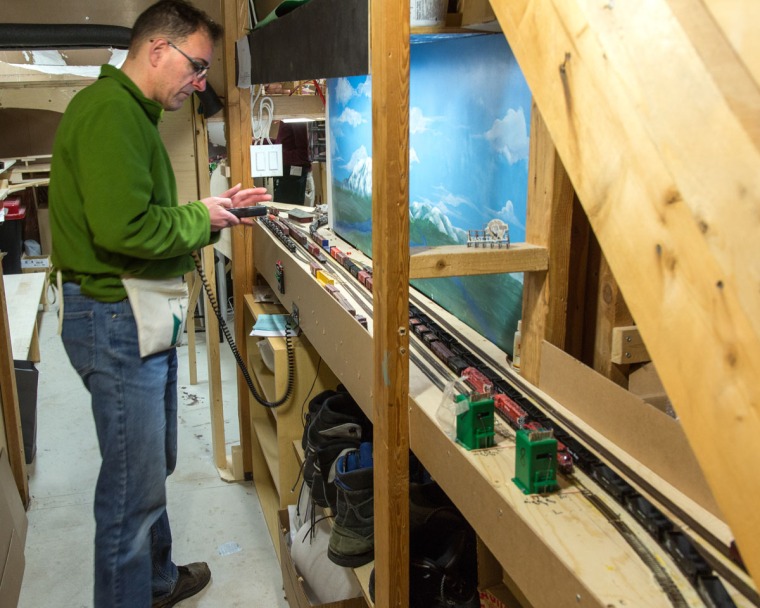
X4070W is entering Midway staging – Note the new panel I made! It looks awful. The dispatching area is rather cramped….my bad.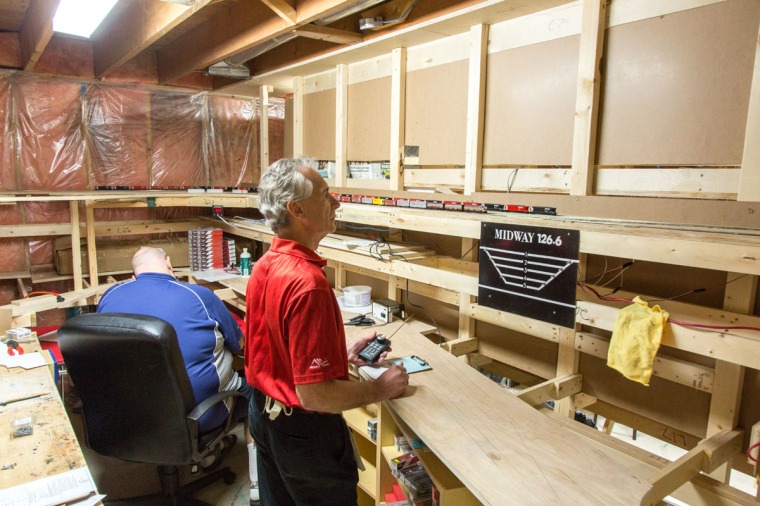
Speaking of dispatching, Dave’s been hard at work this whole time. What a champ!
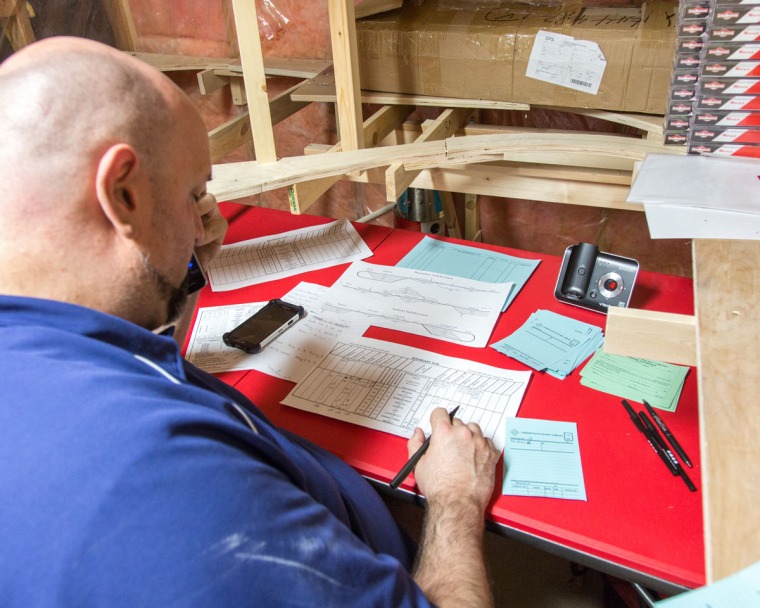
X4070W loops around to become X4070E, and 81 enters staging to terminate.
X4070E passes Grand Forks station. Looks better from far away!

87 is still having trouble.
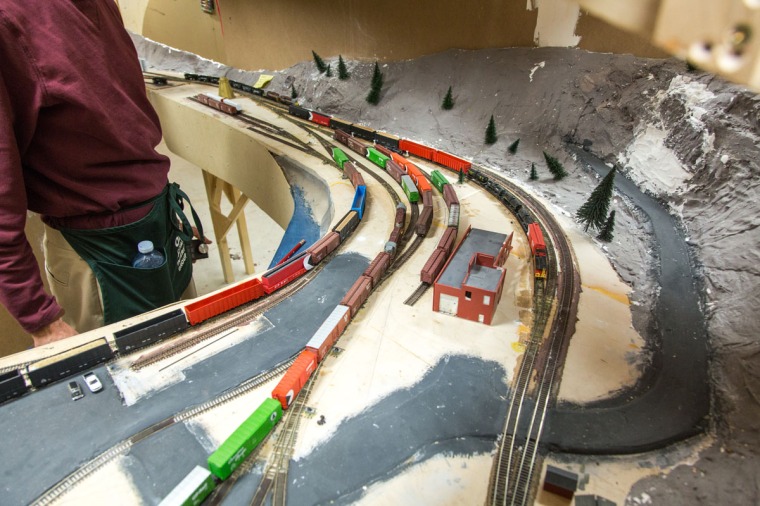
In a beautiful reversal, X4070E meets the westbound empty Phoenix ore train, X8596W, at Shields.
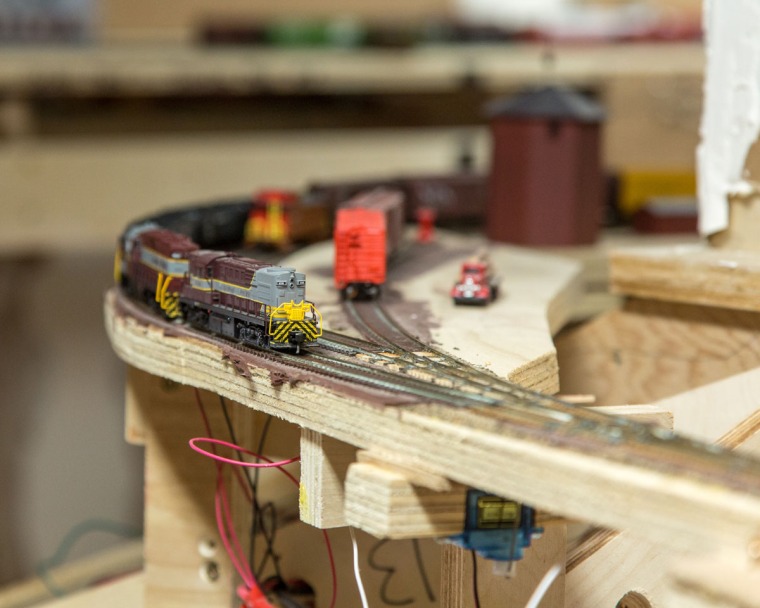
Aaaand 87 gives up and goes home.
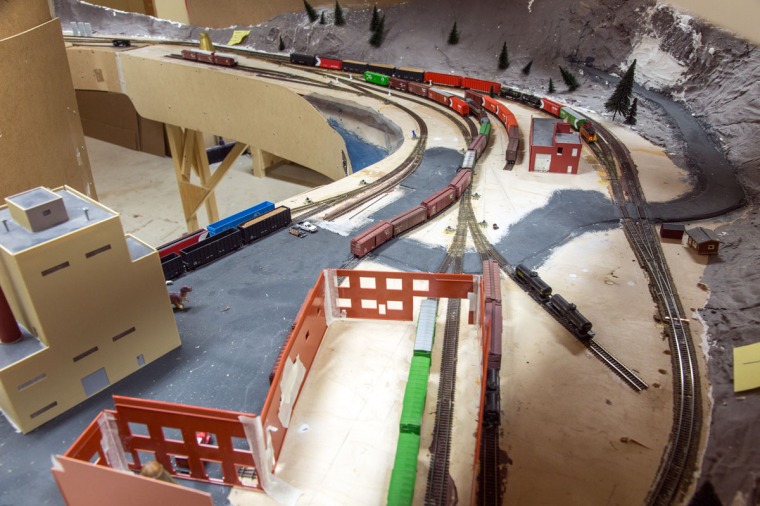
Finally, here’s a view of the paperwork. 16 TOs were issued, which is quite a few too few! Visible is the train sheet, showing train movements through the session. The Form 31s and clearances were made by a certain Coquihalla modeller you may know, and I owe him many thanks.
Well, that’s a wrap! It went surprisingly smoothly and went better as time went on. I half expected flames and wailing, but overall I’m very pleased – It took me a long time to get to this point, and that seems to have paid off!
Til next time!








Too bad I had other commitments today to make it. Looks like it was a lot of fun!
Congratulations on your first operating session!
Matthew;
congratulations – looks like a great 1st session. Look forward to joining you one day.
Congratulations on the first operating session. It’s been really enjoyable to follow the progress to date.
Miraculous clean-up!
Tasty muffins too 😉
Very nice layout your building there. Seems like the first Ops sessions was a cracker.
Regards,
Duncan
Don’t worry about having failures during sessions – that’s the only chance you get to actually test the layout. 🙂 Nothing ever fails until folks are 30 minutes from showing up. Must be a law for operations.
I had my fill of Bachmann H16-44’s too. I put the shells on Atlas H15/16-44 mechanisms. They run just fine. If you choose carefully you can find them with the right trucks.
That’s exactly what I’ve done at this point. I put a few layers of electrical tape at the front of the frame to stop the cab from slipping down too far, but they seem to be a good match – and no burned out decoders yet!